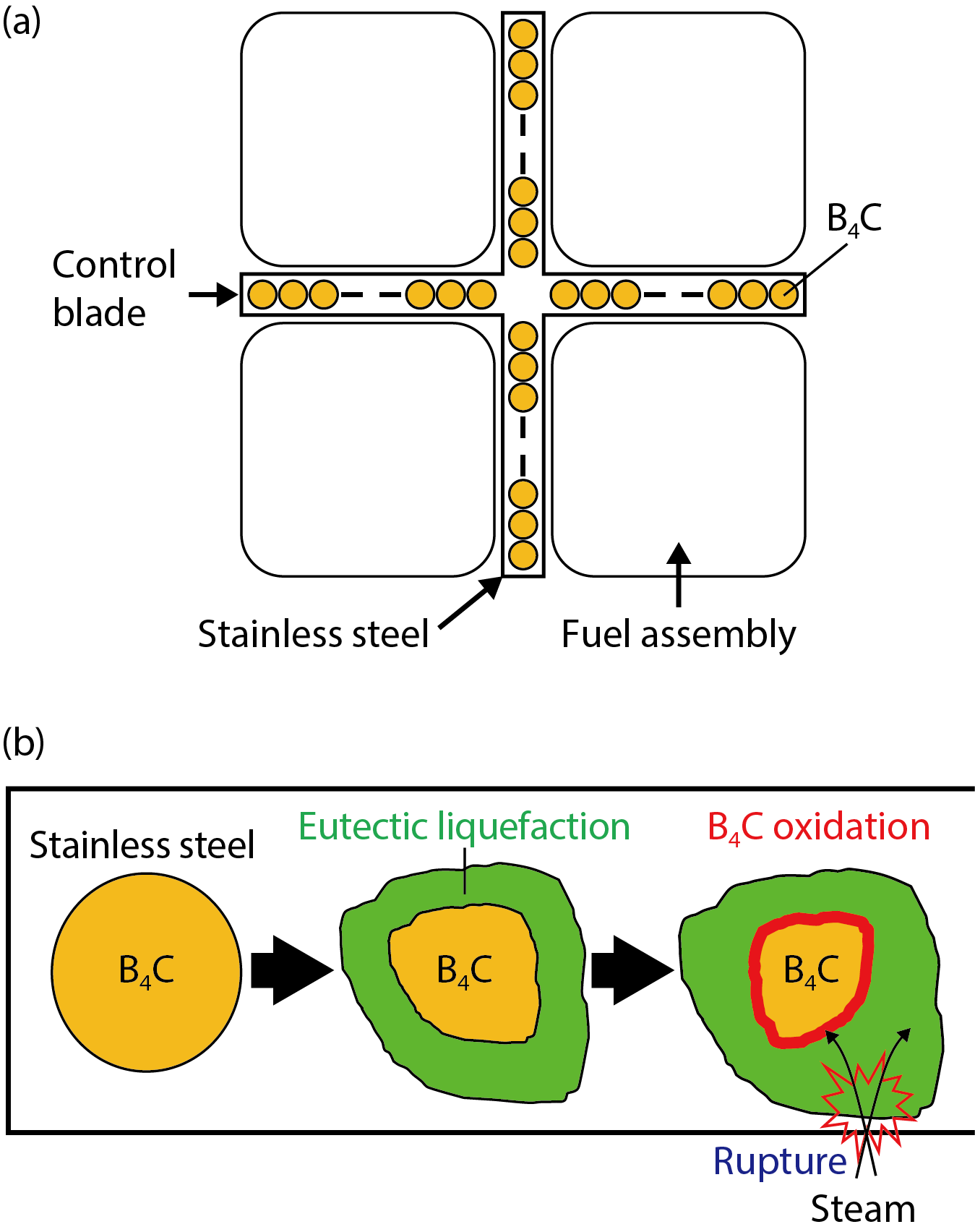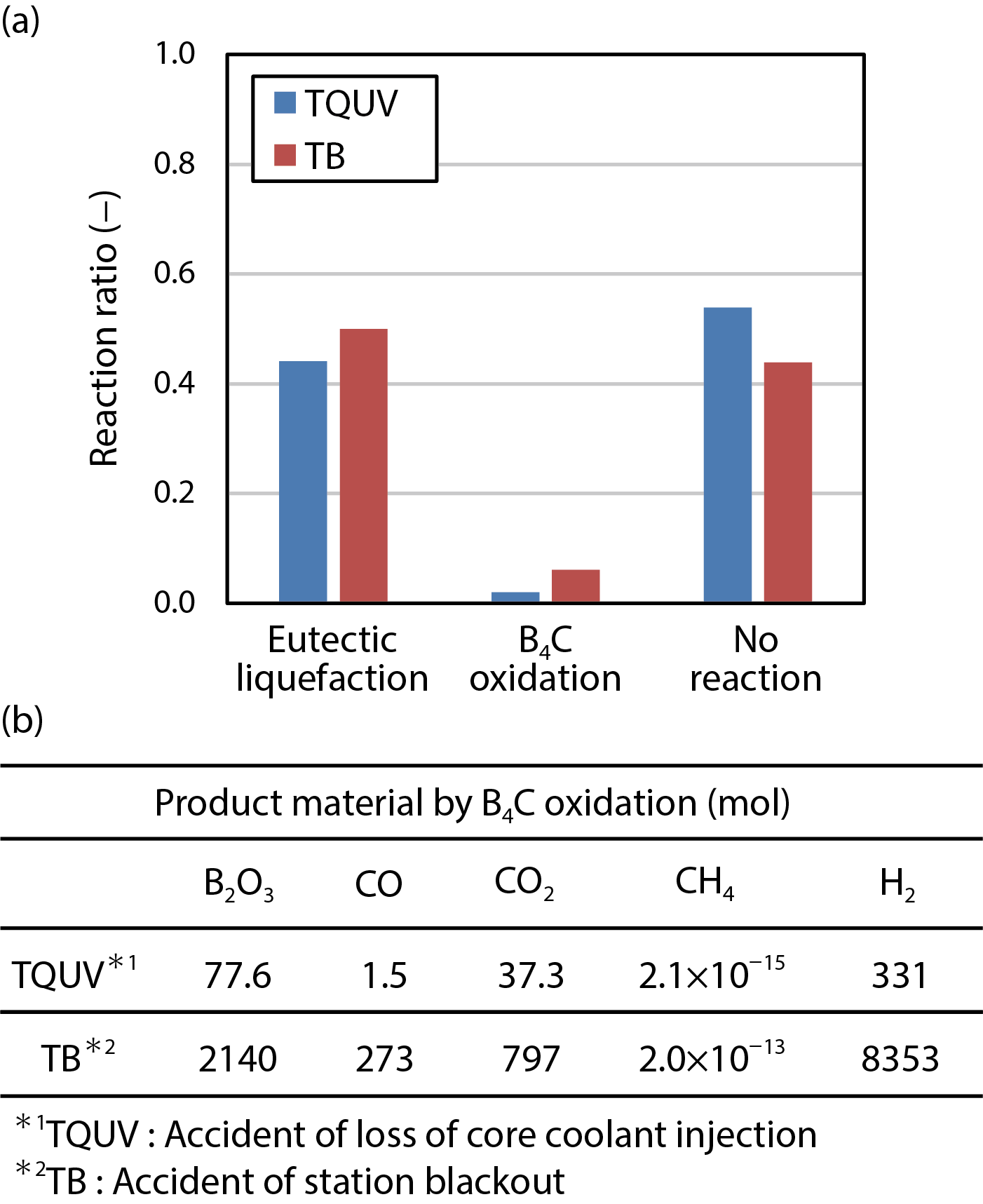
Fig.2-9 Melt progression of BWR control blade

Fig.2-10 (a) Fraction of B4C oxidation and (b) amount of products material
For the purpose of obtaining technical knowledge to support nuclear safety regulations, research on source term evaluation, which focuses on the chemical reaction of fission products (FP) such as iodine and cesium, were carried out. Boron carbide (B4C) was used as a neutron-absorbing material in a boiling water reactor (BWR) (Fig.2-9(a)), and boron species, which were produced from the reaction of B4C oxidation, would affect the chemical reactions of FPs in the reactor coolant system (RCS) (Fig.2-9(b)). The interaction between the B4C and the surrounding steel caused their liquefaction at a temperature lower than the melting point of either material. The reaction rate of B4C oxidation was decreased by promoting eutectic liquefaction, which led to a decrease in the reaction area between the B4C and steam. An integrated severe accident (SA) analysis code is needed to simulate these complex behaviors. The models for the eutectic interaction of B4C with steel and B4C oxidation were incorporated into the THALES2 code and applied to the source term analyses for a BWR with Mark-I-type containment. Two SA sequences with drywell failure by overpressure initiated by a loss of core coolant injection (TQUV sequence) and long-term station blackout (TB sequence) with and without a steam starvation condition in the core, respectively, were selected as representative accident sequences. Approximately half of the B4C was predicted to melt in the analyses for the TQUV and TB sequences, as shown in Fig.2-10. On the other hand, a remarkable difference was found for the fraction of the B4C oxidation between the two sequences. The B4C oxidation was limited for the TQUV sequence under the steam starvation condition in the RCS due to the activation of reactor depressurization. Additionally, the oxidation of B4C leads to the production of carbon dioxide (CO2), which could greatly influence the pH of the water pool in the containment and the subsequent formation of volatile iodine species. Further studies are necessary for the FP chemistry in the RCS, taking into account the influence on pH variation and iodine chemistry in the water pool, to improve the predictability of the source term.